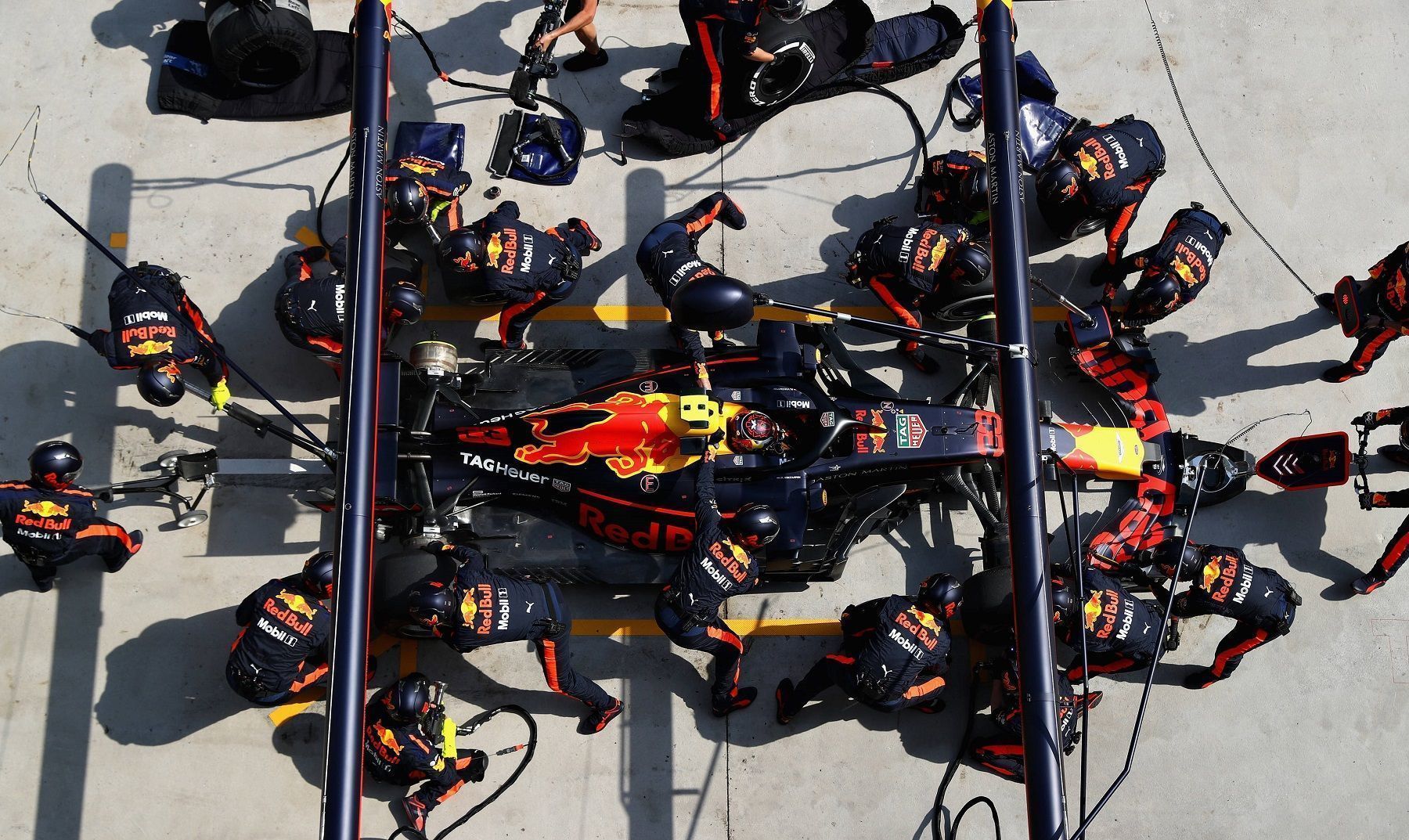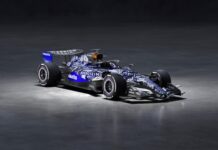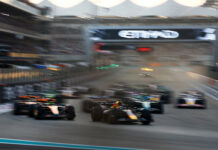Pirelli’s motorsport boss Mario Isola says it is not in his or the tyre manufacturer’s hands to force teams into multiple stops in F1 races.
The 2018 season saw one stop races in majority with both drivers and teams showing their frustration at times at Pirelli with the situation as they couldn’t get their opponents through strategy which plays a key role in the sport these days.
Also, since the cars are difficult to be overtaken on track, the teams had to rely on undercut and overcut a lot of times to pass their rivals. From the outside, the tyre strategies did seem interesting but more often then not, the one stop made it processional.
The call during the season was common – that is for Pirelli to develop tyres which would degrade slightly faster and force teams into two to three stops. Even with an aggressive strategy from Pirelli, the teams were clever still to conserve tyres and opt for one stop.
When asked by FormulaRapida.net on the tyre strategies, if the 2019 season will see more than one – in majority of the races – Pirelli’s motorsport boss Isola wasn’t hugely optimistic and added that he doesn’t have a solution to the issue right away.
“Firstly, it was a great season with a lot of nice races,” said Isola. “On the tyre side, we are happy as we delivered the product that Formula 1 was asking. So, with more degradation – I cannot say with more pit stops because the reality is that all the teams decided to manage the pace rather than increase the pit stops for different reasons.
“One of that is, obviously, it is not easy to overtake with these cars and certain degree of pace management is required because of the fuel and other stuff – so it is not just the tyre alone. The problem as I said, teams prefer to manage the pace.
“So, if this trend continues then I struggle to believe there will be more pit stop in the future unless we can find a different solution because if you loose 20 to 22 seconds in the pitlane, you have to find a way to recover them on the track.
“That means more than one second per lap for the driver to gain which is not easy. The situation is quite different when compared to 2011 or 2012 when the teams were approaching the degradation of the tyres in completely different way.
“Now they are managing [the tyres well] and we need to discuss with the teams, with the FIA and the FOM for the right direction in the future. [If you ask me,] I don’t have a solution right now, honestly.”
The tyre stop has become mandatory in F1 since re-fueling was stopped in the races. Over the years, the teams have found a way to reduce pressure on the tyres which means they can do away with the one stop and save time.
Various methods have been brought like the multiple tyre choices which did play a good role in making the races interesting with teams trying to outdo each other by using different compounds at different juncture.
The same will continue in 2019 albeit in a different way with the complexity for casual fans decreased as Pirelli will label the tyres as hard, medium and soft denoted by white, yellow and red for all the races.
There will be, however, sub-tyres which Pirelli will denote it by numbers such as C1, C2, C3, C4 and C5 – this is for especially the nerds who want deeper knowledge. The C1 is essentially the hardest while the C5 is the softest.
Also, Pirelli will use the thinner tread for all the races in 2019, the one which was only used for three races in 2018. The Italian manufacturer reckons the new construction will also help to combat the blistering issues faced.
Isola discussed more on the 2018 season, preparation for 2019. Here’s the rest of the exclusive Q&A by Darshan Chokhani in Abu Dhabi GP at Pirelli’s hospitality:
Q) You said 2018 was a good year for Pirelli, do you also refer to the lack of tyre failures in the season?
MI: “Absolutely. We have always worked to improve the integrity of the product and we want to have all the seasons like that. We had some failures due to contact with other cars [this year] which is normal situation but in general the product was very reliable and we had no issues at all.”
Q) For a team or a driver, we know what counts as a good weekend but as a sole tyre suppliers, what does a good weekend mean or how is it assessed?
MI: “We as sole tyre suppliers are running for the success of the sport [overall]. We are not running a team, so we win every race [essentially]. At the end of the day, it is a good race if we have more than one car or team is leading.
“Also if we have overtaking on track, if we have drivers that are pushing. This year we have seen a lot of lap records broken this year, that means the performance of the car is incredible even if we can see the weight of the car [is higher] when compared to past cars.
“These cars are really faster and they are putting lot of energy on the tyres and it is good as we learn everyday in Formula 1, so it is a very good laboratory for us to improve our product and find solutions to the existing ones.”
Q) How much extra work you had to undergo to prepare the tyres for 2018 which were to carry extra load due to the heavier and quicker cars?
MI: “This is something like every year, you learn something new. From the beginning of our experience in Formula 1, we had to increase the number of indoor tests and the type of indoor test, for example, to find the integrity of the tyre before running on track and also the number of analysis that we will do in our laboratories.
“The number of tyres that we analyse after each race, after each session, we have a good and a solid system. All the system is improving year by year and it is a guarantee that we are supplying a better product every year.
Q) Moving on, how did all the in-season testing for 2019 went and how is it shaping for next year?
MI: “In 2017, we had new sizes and so it was a big challenge. Last year we were a bit conservative with compounds but this year we have been more aggressive, but now we know that for next year the direction we want to develop the products in.
“We have tyres with different materials, for example, the construction of the tyres we have has a better management – the heat and energy that is going into the tyre. We have different compounds [as well].
“This year the soft, supersoft and ultrasoft were a bit too close, so we want to have a bigger delta lap time between these compounds, so we have reduced the number of homologated compounds from seven to five.
“The new system with only three colours at each event is to make it easier for the spectator to understand the compound for the three types of tyres used and this is basically the development for next year.
“I would say that this year we had in some races blistering which is something a bit more present this season compared to the past, so one of the direction for development was to develop compound materials that are more resistance to blisters because we don’t want to have blisters during the races, we want to reduce the blistering massively.
Q) You talked about blisters, have you managed to identify why it was more this year?
MI: “It is mainly because you are putting a lot of energy into the tyres and into the tread compound, the energy becomes heat and obviously then you overheat the compound and then the compounds starts to develop small bubbles inside the compound and at a certain point they become blisters.”
Q) OK. There was the tread fiasco this year with three races with the thinner one. What is the situation for 2019?
MI: “The tread is in line with the reduce thickness that you are mentioning because on the technical side, the solution was working well – reducing/eliminating the blister, so all the teams are aware of the new construction and new solution that we decided to introduce for 2019.
“They have all the data because October 1, 2018 was the deadline to send them the data for next year, so they are already working on that. The test in Abu Dhabi was a very good opportunity for them to test all the range and to understand, also they were able to compare the 2018 vs the 2019 tyres.”
Q) You have a new format devised for 2019 in terms of compounds, names and colours – how will you impart the information and you reckon it will clear the confusion?
MI: “We will give the information to everybody, to the teams, to the media, to the fans because you have two type of fans – the ones that are not really interested in technical details and the one just to watch the race, and then a lot of fans are interested in the technical details.
“So, we will provide this details and you will know exactly that in Monaco you have C3, C4, C5, Abu Dhabi maybe you have C2, C3, C4 and in Silverstone C1, C2, C3, for example. Once you have this information, you can also make a comparison of C2 as it works in this way in Abu Dhabi and works in a different way in other circuit and so on.”
Q) Is there a delta time set in your mind regarding the compounds just yet?
MI: “The target is to have roughly one second between compounds or 0.8s per lap always. It also depends on the circuit because not all the circuits have the same length or the lap time, and we have for next year a new ultrasoft that is in-between the soft and the hyper of 2018. The supersoft is no more, so there is a jump between soft and ultra.
“The performance of the medium is a bit better as well which is closer to the soft and the performance of the hard is little bit better from the medium because this year the hard wasn’t used a lot. We wanted to move the medium to the softer side, the soft we keep as it is, the ultras a bit more towards the hyper and the hyper as it is.”
Q) Does the fuel level increasing change the tyre strategy in any way?
MI: “This will be helpful for the drivers to push in the stints and not save the fuel. The tyres should have a bit more degradation.”
Q) What about the wet and the intermediate compounds in 2019?
MI: “There is a change in the product. The wet is a new tyre especially the front. For the intermediate, we have a new compound also. You remember that this year we had two versions for wet and intermediates, for next year – thanks to the new product – we are only planning one wet and one intermediate as was in the past.”
Q) Finally, if we look outside F1, would Pirelli think about joining series like WEC, MotoGP or Formula E?
MI: “We are already – more or less – if not all the GT3 races but the most important ones, we are supplying tyres to the Blancpain series, to Ferrari Challenge, Lamborghini Super Trofeo, lot of Formula 4 series.
“We are supplying to Formula 2 and next year also Formula 3 and then there are a lot of championships like touring cars where we are involved as well. Any championship is different, it requires a lot of resources, expert people, so if in future we will have opportunities in different areas, we are happy to consider that.
“You mention electric cars, they are the future, so for sure in the future, we will have something on electric cars. Then there is the autonomous driving, there are lot of new challenges.
“Obviously for us motorsport is an environment where we develop technology and that being said, if we have an opportunity to go in a championship with a possibility to develop tyres, we are happy to go there.
“At the moment, it is difficult [to move to say WEC, MotoGP or FE] because they have suppliers. So, it depends when the contract expires – usually you have tender – we can apply to that tender and then see.”
[Read: Tyre choices for first four 2019 F1 races]
[Read: Brendon Hartley exclusive]



















